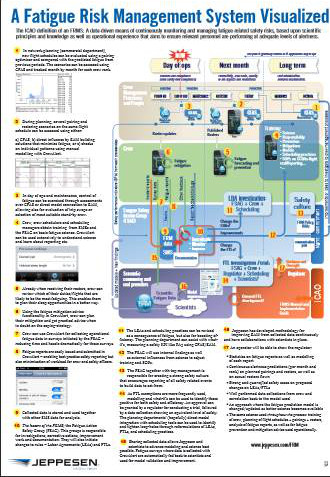Source:
 Fatigue Risk Management tools that make a difference.
Fatigue Risk Management tools that make a difference.
Finnair Makes Fatigue Risk Visible in Day of Operation
A few years ago, Finnair became the first airline to plan their pilots with direct influence by a mathematical fatigue model during crew schedule construction. In recent months the airline has expanded its usage to also include fatigue “alerts” that are automatically pushed to the planners in day of operation.
Finnair is using the alert monitor, a feature of Jeppesen Crew Tracking. The alert monitor re-evaluates the entire operation every few seconds and flag potential crew problems to the planner such as late check-ins, too short connection times, breach of maximum duty time etc.
The alert monitor has been in use at Finnair for several years, but it has until now only been used to resolve issues around operational feasibility and regulatory compliance. Now, supporting a performance-based approach, the human physiology is taken into account through the use of the Boeing Alertness Model – allowing for a more precise address of flight safety.
 Jari Ahonen, Crew Tracking Specialist, Finnair, showing fatigue alerts in the system
Jari Ahonen, Crew Tracking Specialist, Finnair, showing fatigue alerts in the system
“The alert monitor is our main tool for not missing out taking action where needed,” says Jari Ahonen at Finnair. “Fatigue alerts are now present as a new category in the monitor enabling us to put extra attention to problematic scheduling patterns – going beyond what regulation requires. Also during problem resolution, when recombining flights for our crew, we have fatigue indicators available in our planning GUI and can take that into account.”
![]() Fatigue Risk Management tools that make a difference.
Fatigue Risk Management tools that make a difference.
